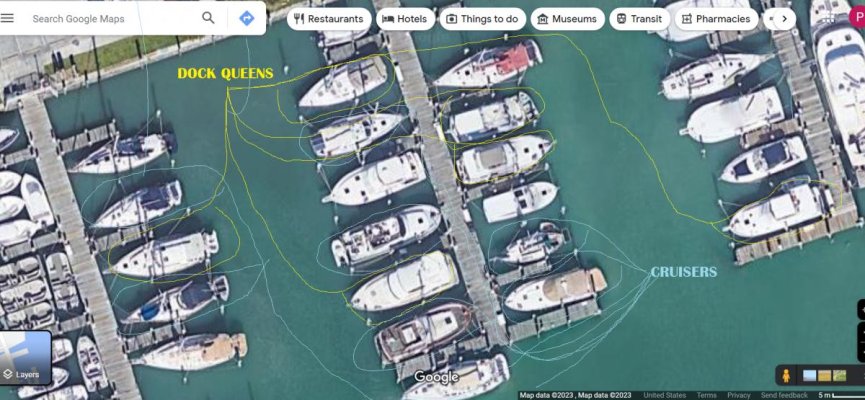SteveK
Guru
- Joined
- Jul 5, 2019
- Messages
- 5,191
- Location
- Gulf Isalnds BC canada
- Vessel Name
- Sea Sanctuary
- Vessel Make
- Bayliner 4588
Peter I am willing to meet you halfway at 67.5*.
This reminds me, one time the dock person got anxiety when I stepped off the swim grid with stern line in hand and walked along as the boat coasted into the stall. That person stopped the boat short in panic and had to make it up by pulling it another 15 feet forward after I explained the plan.
The best laid plans.
This reminds me, one time the dock person got anxiety when I stepped off the swim grid with stern line in hand and walked along as the boat coasted into the stall. That person stopped the boat short in panic and had to make it up by pulling it another 15 feet forward after I explained the plan.
The best laid plans.

